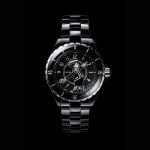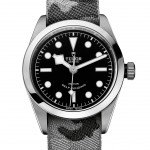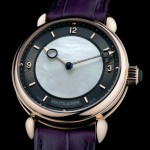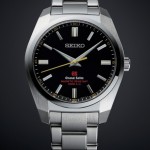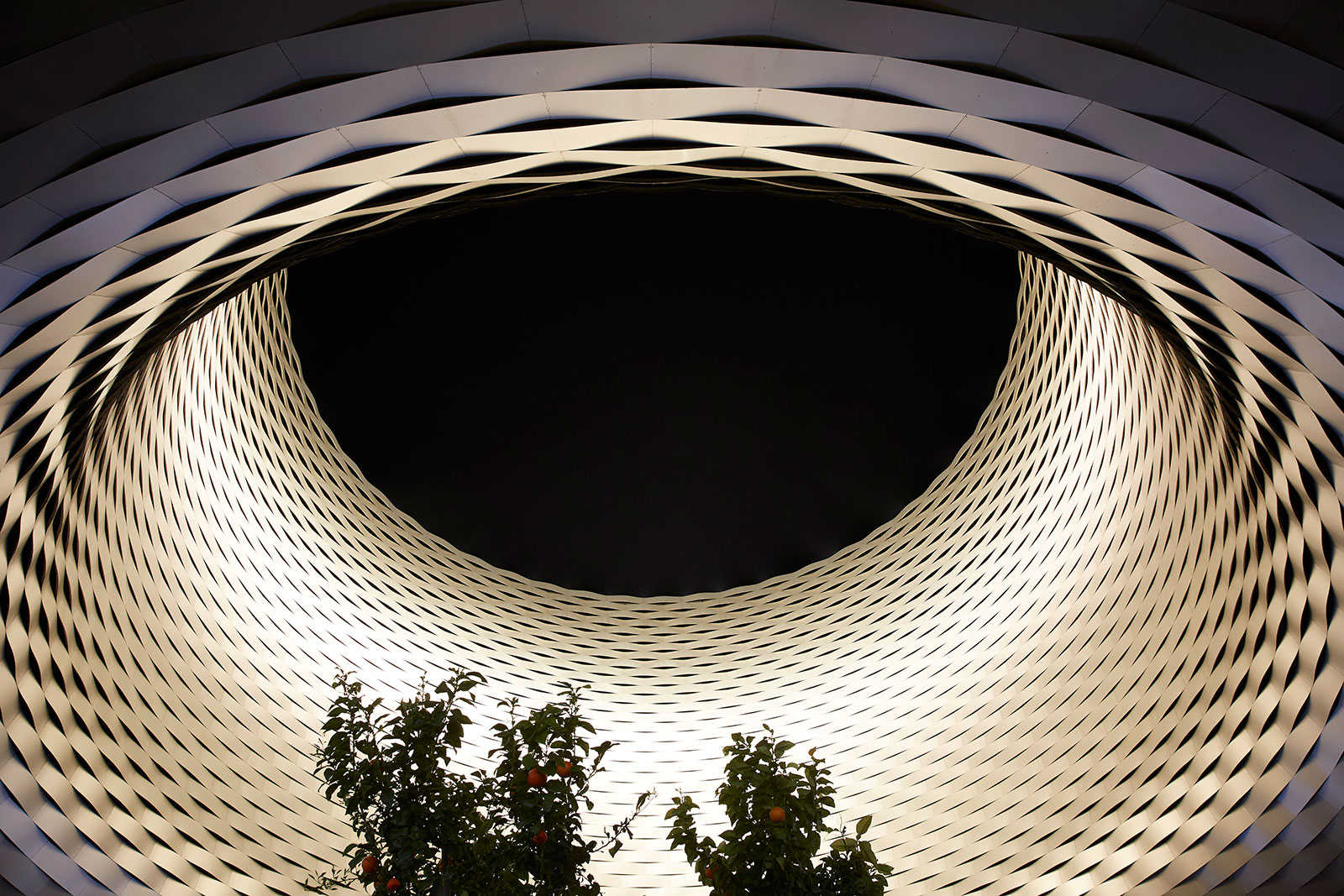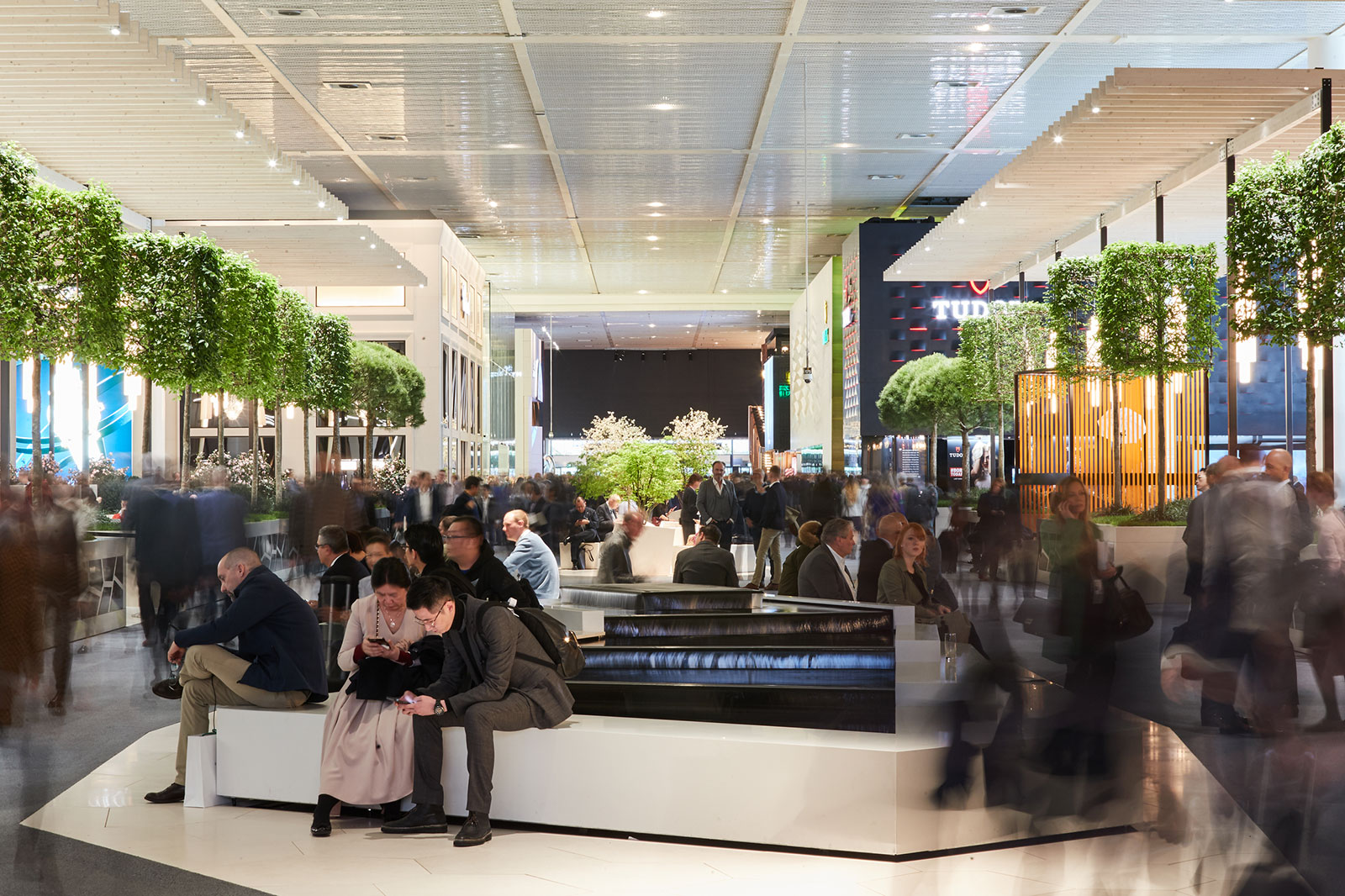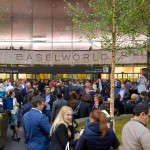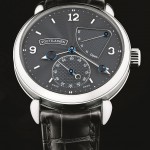Emile Chouriet Introduces the Héritier à Guichet
Art Deco and affordable.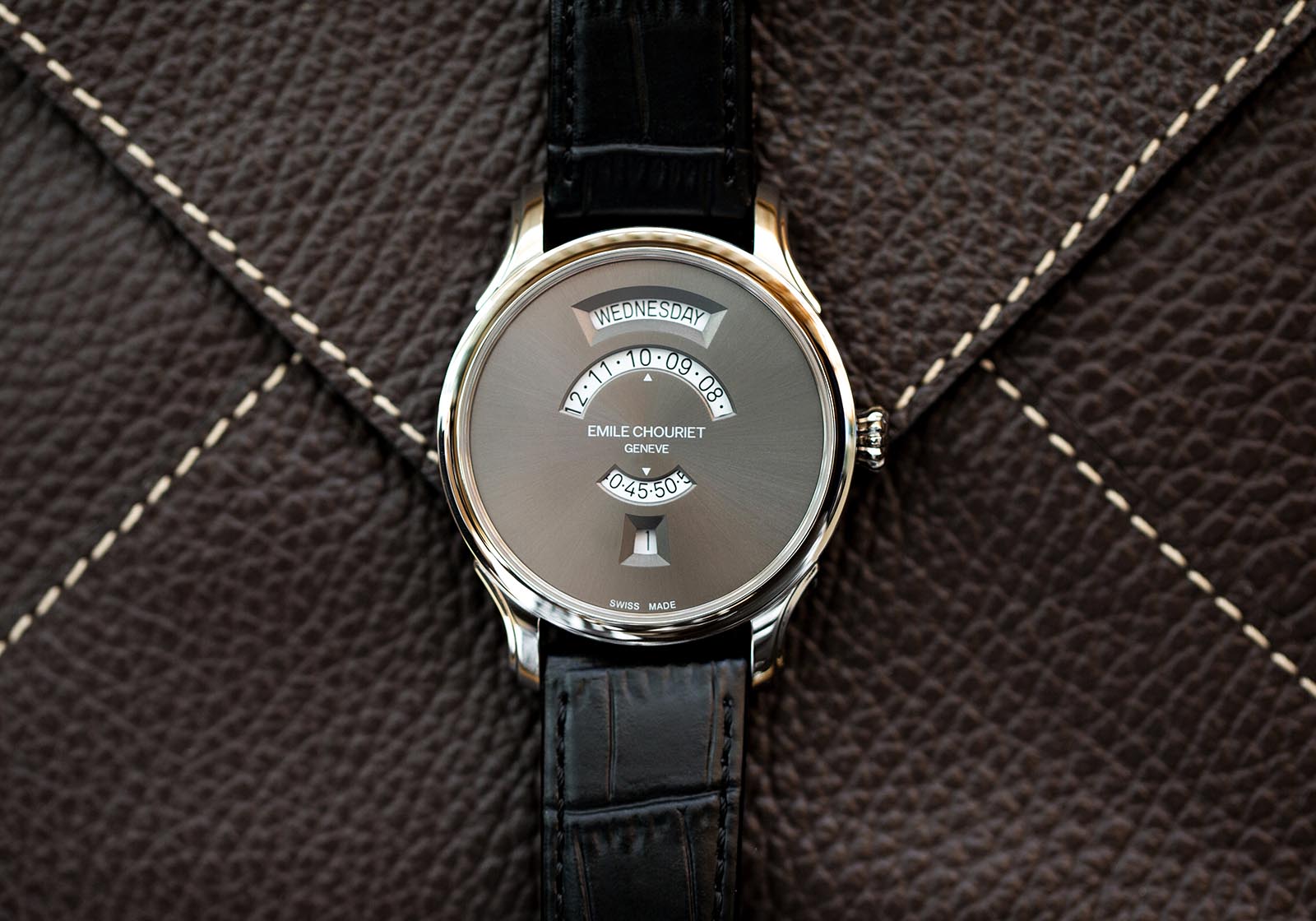
A brand specialising in affordable watches priced under US$2,000, Emile Chouriet has a fairly generic line-up, but with one obvious exception, the Héritier à Guichets. Showing the time and calendar in windows, the watch is inspired by timepieces of the 1920s, while having a titanium case with fancy lugs.
Named after a 17th century French watchmaker, the brand was founded in 1998 by a Swiss businessman but acquired a decade later by Fiyta, a Shenzhen-based watchmaker best known for producing the chronograph issued to Chinese astronauts. Consequently, Emile Chouriet now focuses its efforts on the Chinese market, but the Héritier à Guichet combines an Art Deco style and novel time display that doubtlessly has wider appeal.
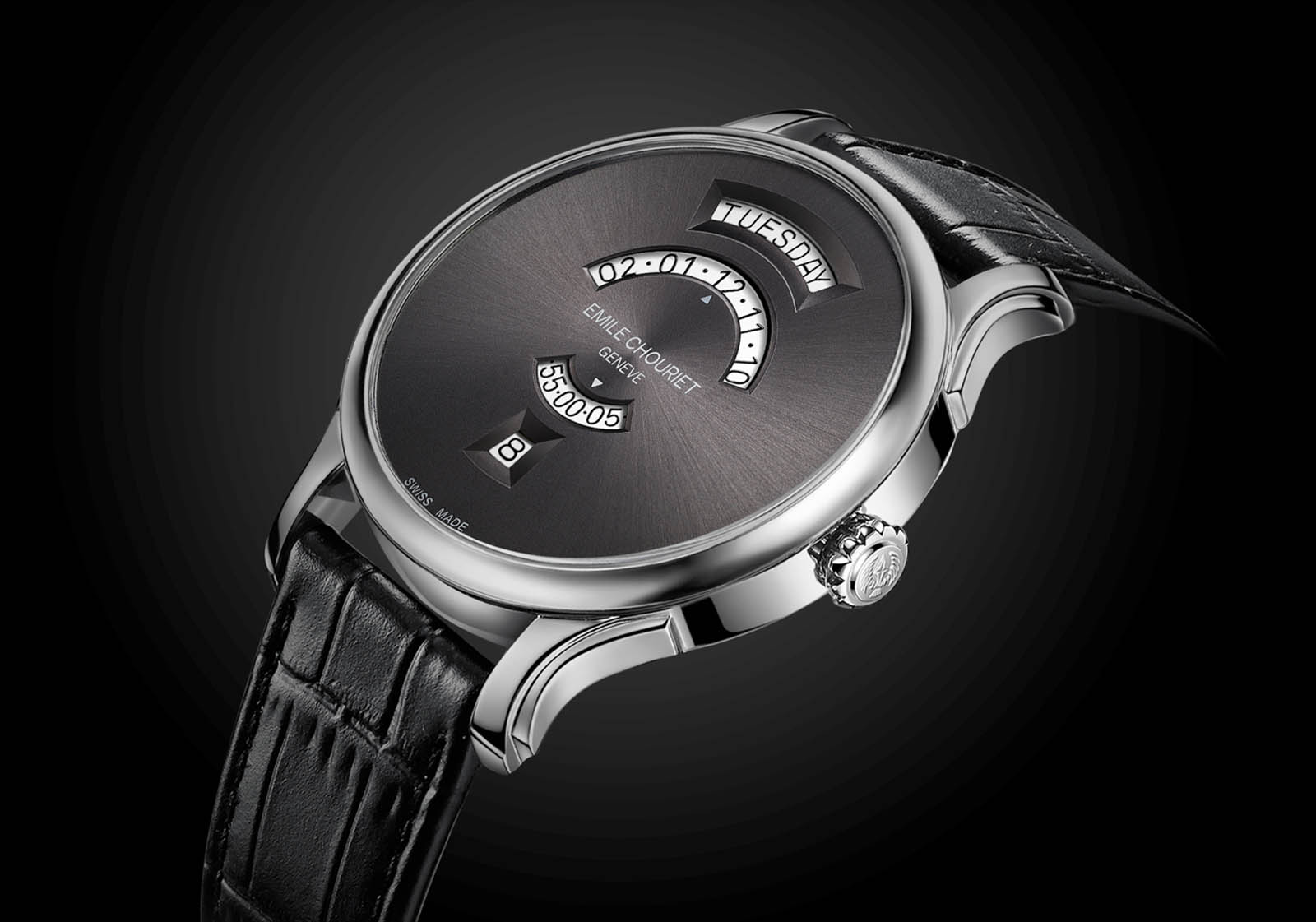
Digital time displays became fashionable during the Art Deco period, with pocket watches sporting jumping or wandering hours, or even full calendar displays in an elongated window. The Héritier à Guichet takes inspiration from that early 20th century style, reproducing it in an affordable manner.
A pale metallic grey with a radial-brushed finish, the dial consists of four windows, with the two closest to the centre showing the hours and minutes, while the outer apertures with wider bevels displaying the day and date. The hours and minutes, however, are not instantaneously jumping displays, instead they are “dragging” indicators that continually move just as conventional hands would.
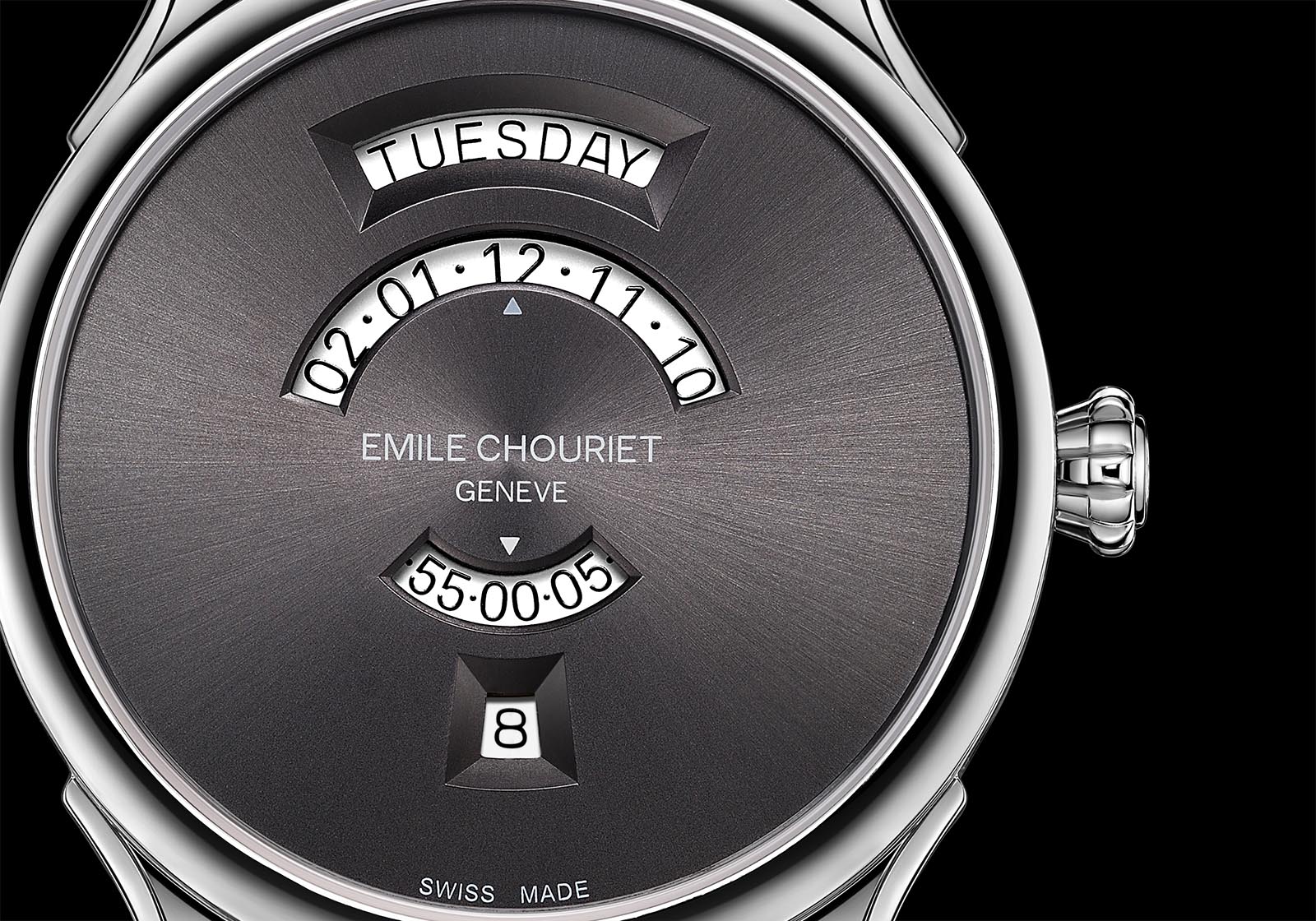
Also unusual is the case: though it has a moderate 40 mm diameter, the material is titanium – an unusual choice of metal for a classically-styled watch – while having distinctive, double-fluted lugs.
The movement inside is the ETA 2834, which is essentially an ETA 2824 with a day and date display. Mechanically, the modifications made to create the window-type display are minimal, primarily replacing the hour and minutes hands with discs, but the result is nonetheless a watch that is an interesting contender in a price segment that doesn’t have many such offerings.
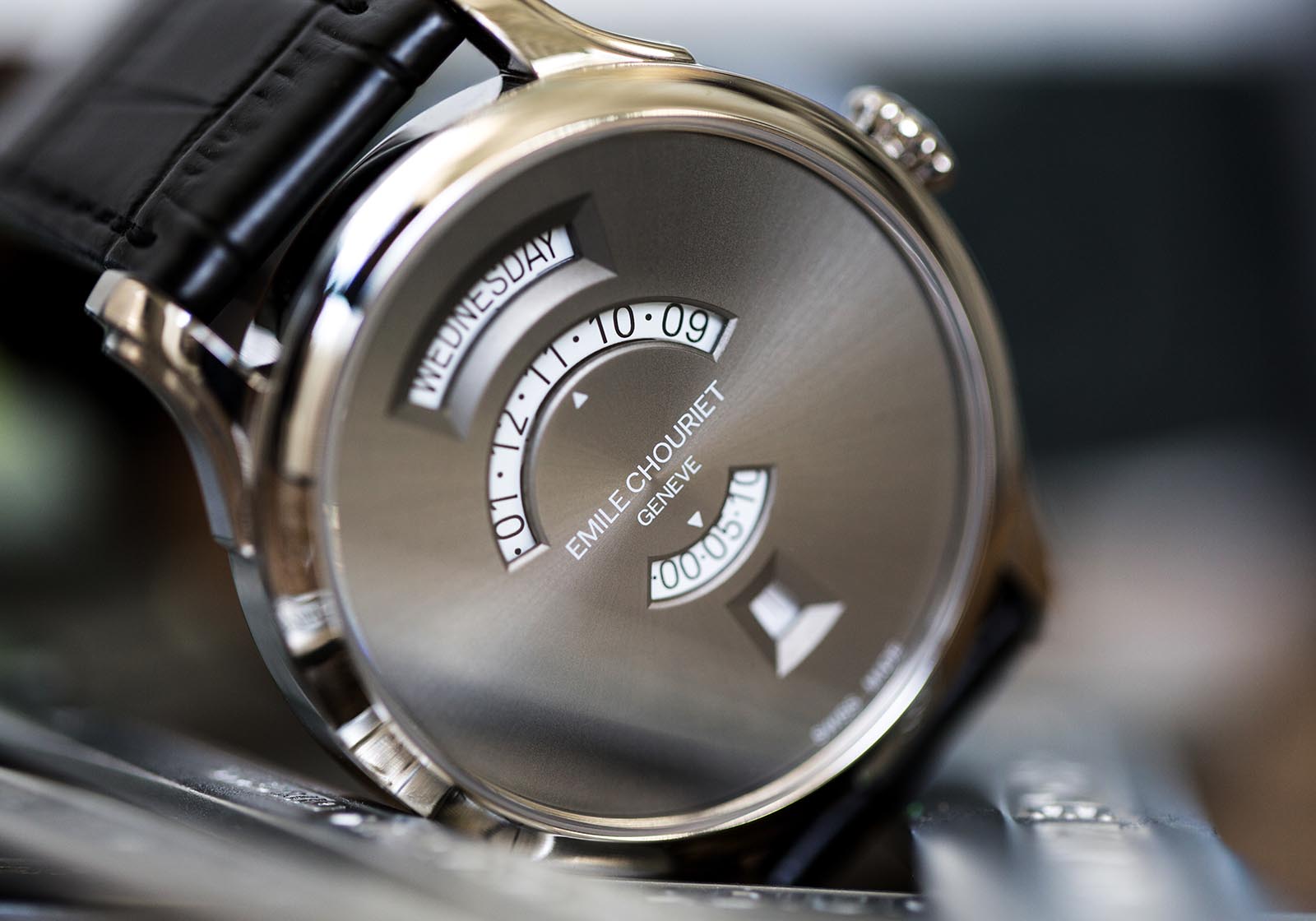
Key facts and price
Emile Chouriet Héritier à Guichets
Ref. 18.1129.G.7.2.63.2
Diameter: 40 mm
Height: 11 mm
Material: Titanium
Water resistance: 30 m
Movement: EC9227 (ETA 2834)
Functions: Hours, minutes, day, and date
Winding: Self-winding
Frequency: 28,800 beats per hour (4 Hz)
Power reserve: 38 hours
Strap: Embossed calfskin
Availability: From authorised retailers
Price: US$2,070
For more information, visit Emilechouriet.com.
Back to top.


